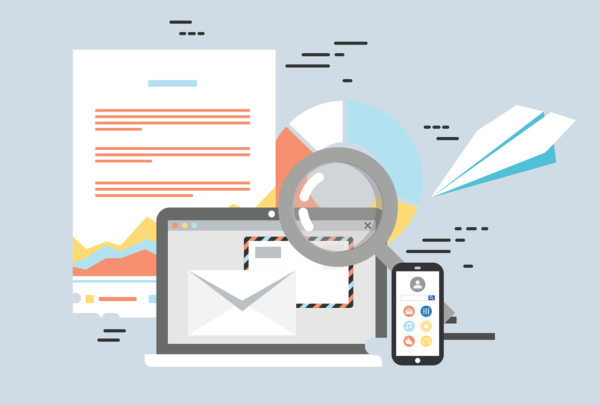Once you have started to send email marketing to your customers it’s important to listen to any feedback you get from your subscribers. You should also keep tailoring your emails based on how they perform. One easy way to do this is to use a click map. This is a graphic representation of where in your emails you are getting the most clicks.
Many larger businesses have quarterly or biannual email reviews, this practice could easily be adopted by a small business. These email design reviews are a great way to evaluate your emails. Us these reviews to build on successful elements within your email designs. With this knowledge, you might want to make popular sections larger, more in-depth or simply appear higher in the email design. Elements that consistently do not perform well should be either removed entirely or moved into a different type of email. If emails are not performing as well as expected it’s also advisable to look into your data and use more targeted data selections.
Design System
Setting up an email design system is not as hard as it sounds or as time-consuming as making email templates. Email will also certainly be one of the later elements that will need to be designed. It’s important to remember that Email design needs to sit low down within a pre-existing design hierarchy. This should allow Email design to mimic what has been designed before. All people who receive a brands emails will almost always have interacted with the brand before, either in-store or through the website. This means it’s important for the email design to match the branding as close as possible. An Email design system is grouping various layouts and graphic designs styles into component parts to form emails. In other words it is a collection of elements that are used to make up an email.
Design systems for the parent brand will include micro levels of detail such as header styles, color palettes, paragraph spacing. These elements should all form the basis of an Email design system. However, these micro-level elements are usually established higher up the design hierarchy. A good email design system replicates the key elements of a brand while trying wherever possible to not introduce new design elements. That is not to say email can’t have anything unique in terms of a brands style guide. As it sits near the bottom of a brands style guide it should be mostly mimicking established design patterns. Remember the main function of an email is usually to push traffic to a website. The brand experience should be uniform and continued between the two mediums.
Email Components
There are hundreds of different types of emails a company could send. To start creating a component library create an exhaustive of all the emails you’re likely to send. Then break down each email into its component parts. For example, Header, Body Copy, Button and Footer. You will quickly notice than many emails will share many of the same components. You might want to break components into smaller parts so a header might become; Logo, Navigation, View in browser link and Store finder icon.
Then it is time to create a single list of all your components and any possible sub-components. Cutting out wire-frames can help visualize how all the components could be assembled to create emails. This is a good opportunity to get other people in the business involved. They can suggest new components or help spot components that might have initially been missed.
Recommended for You
Webcast, July 31st: 3 Foolproof Ways to Grow a Massive Email List
The next step is to design each component this graphic resource is what will become your Email design system. It can, of course, be amended and added to over time or even totally redone should the company rebrand.
Snippets
With a complete Email design system, it’s now time to code. If you’re using any modern sort of modern coding software you should be able to create code snippets. Create coded snippets for each component along with an easy to understand nomenclature. Once the snippets are all coded they will need to sit inside an email template. This template should act as a universal holder that should work with any of snippets in a combination or number. Thorough testing the entire snippet library along with all the templates is essential at this point as it can save massive amounts of time in email testing once the Email design system starts to be used in production.
Documentation
Lastly it is important to create some form of internal documentation. It should have two main uses. It should allow marketing or business members of the company to use the graphic version of the Email design system and then allow a technical team to turn those instructions into new coded emails.
Types of Emails
To help you get started here is a list of some of the types of emails you might send;
Welcome, Newsletter, New Product, Promotional, Testimonial, Educational, Replenishment, Upgrade, Survey, Thank you, Re-engagement, Abandoned Cart, Abandoned Browse, Transactional, Birthday, VIP, Event, Loyalty Reward, Business Notice
Things to take note of
There are many other small details in email marketing that you should also pay close attention to. Using a good pre-header in your emails is also important and can help improve the effectiveness of the subject line.
Adding personalization to emails is also a great way to make emails more effective.

